Beyond stereotypes, 'The Complete History of Blacks in the Bible' unveils a narrative rich with diversity and intrigue, challenging long-held assumptions.
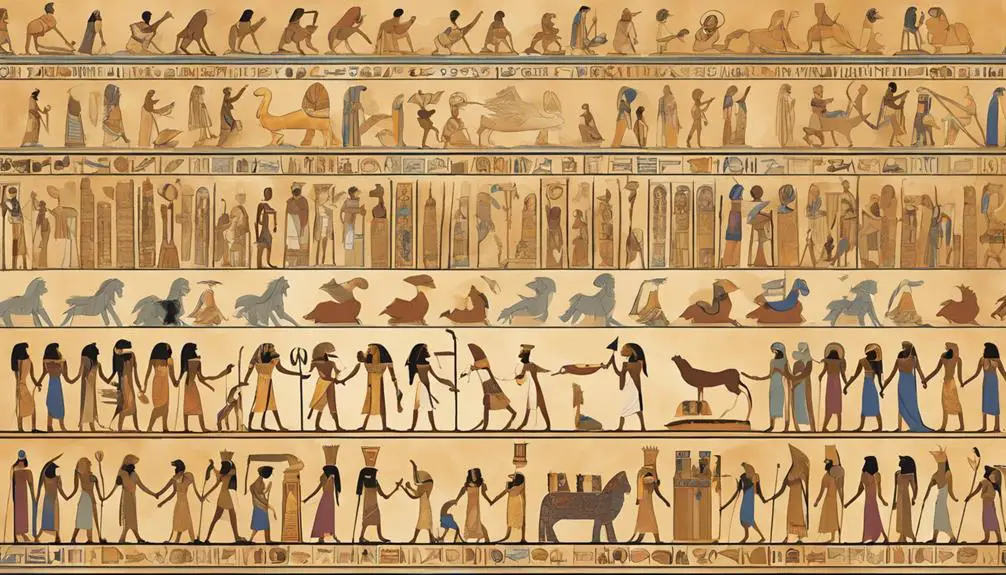
The Complete History of Blacks in the Bible
Imagine believing the Bible's cast was whiter than a Sunday morning televangelist's suit collection, only to discover it's more diverse than you've been led to believe.
You've probably glossed over the stories of Moses' Cushite wife or the Ethiopian eunuch without realizing their significance in the grand tapestry of biblical history. These narratives aren't just footnotes; they're integral to understanding the multifaceted nature of the biblical world.
As we peel back the layers, you'll find yourself questioning and reevaluating what you thought you knew about biblical history and its depiction of race. Stick around, because this journey through scripture is about to get interesting.
Key Takeaways
- Biblical narratives include significant figures of African descent, showcasing early examples of racial diversity and inclusion.
- Interpretations of these stories highlight the complexity of racial discourse and the importance of contextual understanding.
- Christianity's teachings on universal brotherhood are exemplified through stories like that of the Ethiopian Eunuch, emphasizing faith over racial barriers.
- Diplomatic and cultural exchanges between African figures and other biblical characters underscore the interconnectedness of ancient civilizations.
Early References and Ham's Legacy
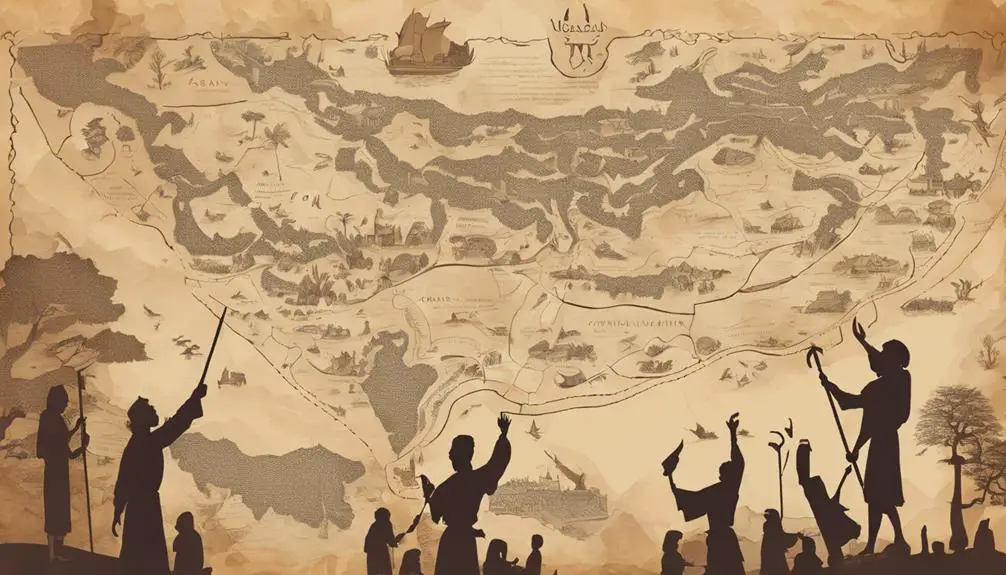
In exploring the early references to Blacks in the biblical narrative, one can't overlook the significant yet contentious legacy of Ham, whose story has historically been intertwined with interpretations of race and curse. Ham, a son of Noah, is central to understanding the biblical roots of racial discourse, particularly through the story of Canaan's Curse. This narrative, often cited in theological debates, suggests that Ham's son Canaan was cursed by Noah, leading to a longstanding association of this curse with the African lineage, though scholars argue this interpretation is a misreading of the text.
Moreover, the legacy of Ham isn't solely tied to the curse. It also includes the figure of Nimrod, a descendant of Ham, celebrated as the founder of Nimrod's Kingdom, which encompassed significant civilizations, including Babylon. This part of Ham's legacy presents a complex narrative that juxtaposes notions of curse with those of grandeur and civilization building. Analyzing these references requires a nuanced understanding of the biblical text, urging one to consider the socio-historical contexts in which these narratives have been interpreted and reinterpreted.
Such an approach demystifies the simplistic associations and uncovers the multifaceted representations of Blacks in the biblical tradition.
Moses' Cushite Wife
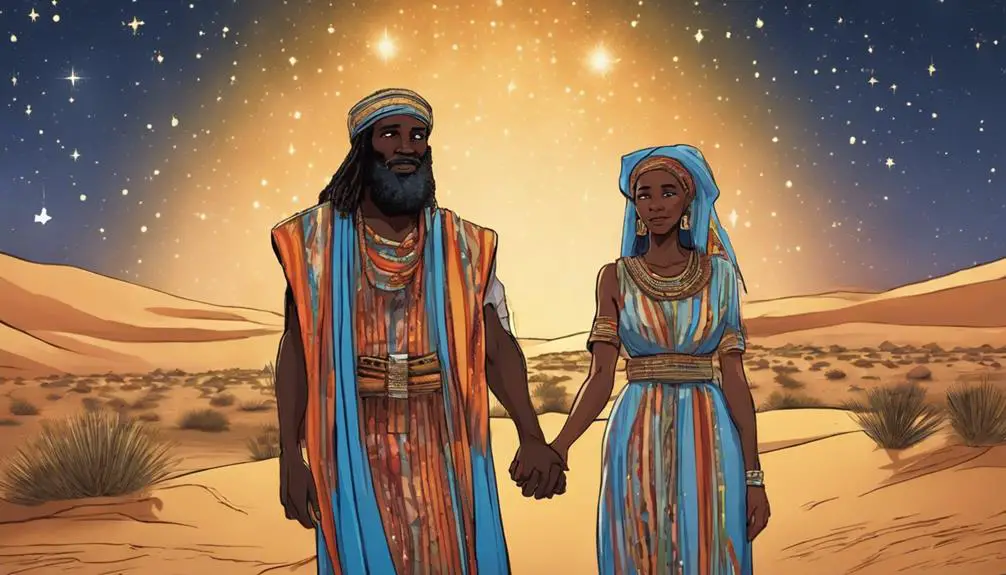
Another pivotal moment in the biblical narrative involving Blacks is the story of Moses' marriage to a Cushite woman, a union that sparked significant discussion and controversy among his contemporaries and later interpreters. This event isn't merely a footnote in Moses' life but a window into the complex interplay of race, religion, and social dynamics within the biblical context.
- Miriam's Objection: Miriam, Moses' sister, along with Aaron, challenges Moses' authority based on his marriage to a Cushite woman. This objection isn't just about familial disapproval but reflects deeper issues of racial prejudice and social hierarchy within the Israelite community.
- Divine Response: The narrative swiftly moves to God's response, which is decidedly against Miriam and Aaron. This divine intervention underscores the principle that God's covenant transcends ethnic and racial boundaries, reaffirming the inclusivity of the divine promise.
- Priestly Lineage: The Cushite woman's marriage into Moses' family, a significant priestly lineage, symbolizes a broader theological theme of unity and reconciliation. It challenges the community to see beyond race and ethnicity, embracing a more inclusive understanding of God's people.
This episode not only sheds light on the presence and role of Blacks in the Bible but also offers profound insights into the biblical vision of community and priesthood.
The Ethiopian Eunuch
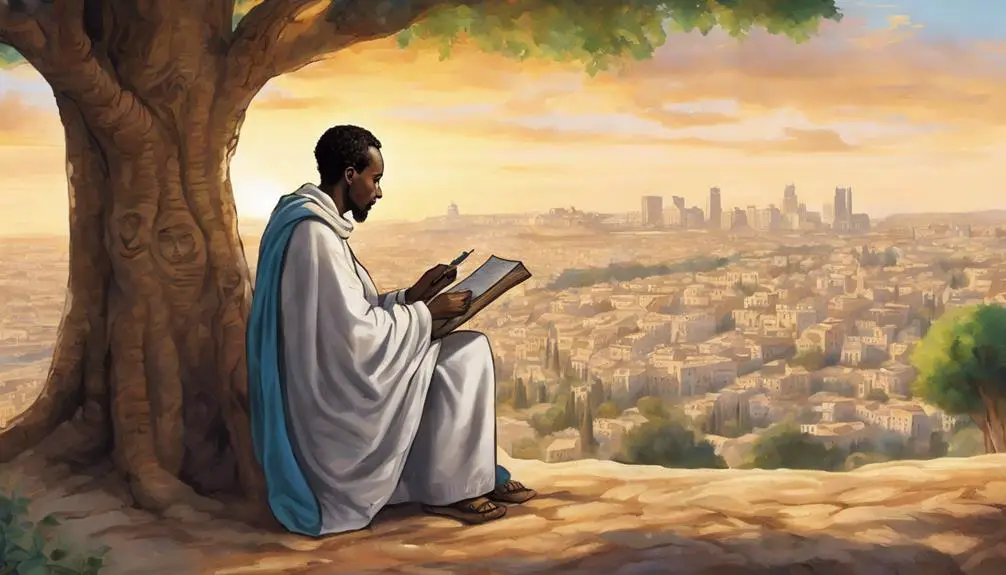
Reflecting further on the theme of inclusivity within the biblical narrative, the story of the Ethiopian Eunuch exemplifies how early Christianity's reach extended beyond Jewish ethnic boundaries to embrace a diverse array of believers. This account, found in the Acts of the Apostles, isn't just a mere anecdote; it's a pivotal moment that underscores the universal appeal and acceptance of the Christian faith.
The Eunuch's baptism, conducted by Philip the Evangelist, is particularly significant. It wasn't merely a ritualistic act but a profound demonstration of faith transcending ethnic and social barriers. This event signals a critical shift, highlighting that the message of Christianity was for all humanity, not confined to a specific group. The Eunuch, a high-ranking official under Queen Candace of Ethiopia, represents a bridge between cultures and continents, underscoring the expansive, inclusive nature of early Christian evangelism.
The conversion significance of the Ethiopian Eunuch can't be overstated. It illustrates early Christianity's commitment to a universal brotherhood, where one's status, ethnicity, or nationality didn't dictate access to the faith's transformative power. This narrative, rich in cultural and theological layers, deepens our understanding of the early church's mission and its embrace of a diverse fellowship of believers.
The Queen of Sheba's Journey
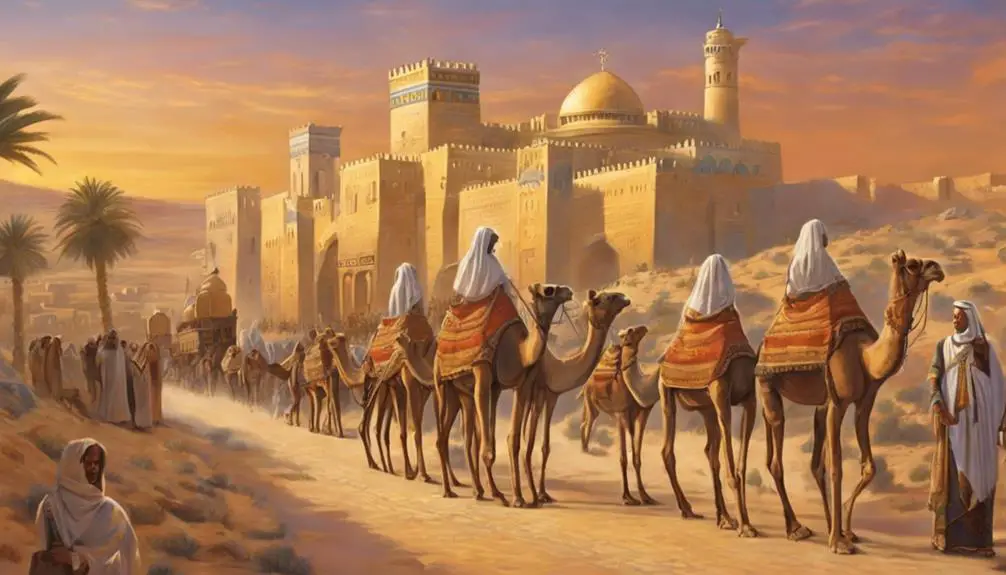
Turning our attention to the Queen of Sheba's journey, we encounter a narrative that not only enriches our understanding of biblical heritage but also offers insight into the dynamics of power, diplomacy, and faith across ancient civilizations. The queen's voyage to Solomon's kingdom is a testament to the interconnectedness of regions through trade routes and the high regard in which Solomon's wisdom was held.
To further engage with this topic, consider these three key aspects:
- Solomon's Wisdom: The queen's primary motive for her journey was to test Solomon's famed wisdom. Her encounter with him is a reflection of the mutual respect between two knowledgeable and powerful leaders, highlighting the esteemed position of wisdom in governance and diplomacy.
- Trade Routes: The narrative underscores the importance of trade routes in facilitating not only the exchange of goods but also cultural and intellectual exchanges. The Queen of Sheba's journey exemplifies the rich interactions that occurred along these ancient pathways.
- Diplomatic Relations: The visit emphasizes the role of diplomacy in forging alliances and establishing peace. It's a prime example of how dialogue and mutual respect can bridge diverse cultures and beliefs.
This analysis underscores the profound impact of this biblical account on understanding ancient geopolitics and the legacy of black figures in biblical narratives.
Simon of Cyrene's Significance
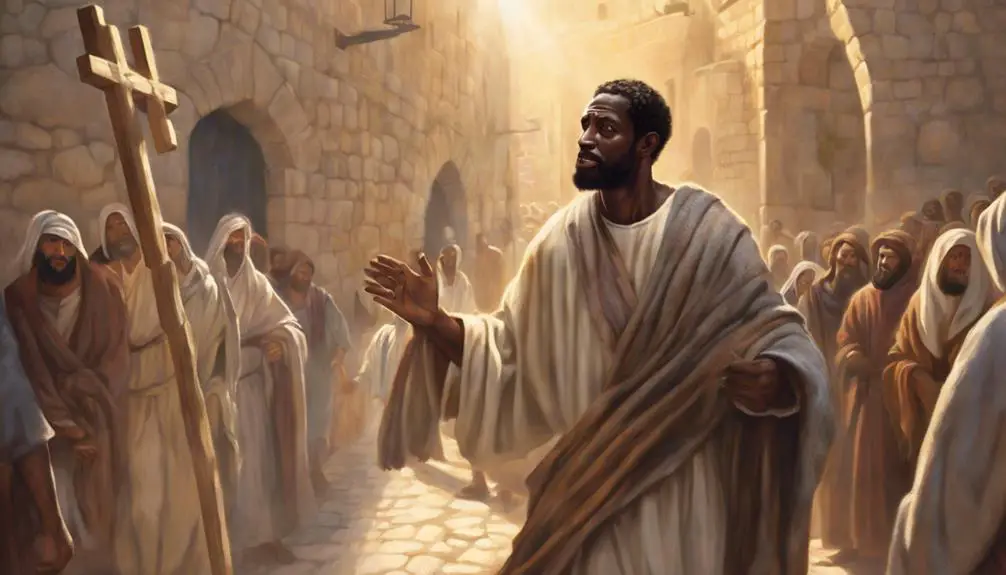
Why does the brief yet poignant mention of Simon of Cyrene carry profound significance within the biblical narrative and broader historical context? Simon's encounter as the man compelled to bear Christ's cross as he walked towards crucifixion encapsulates cross-bearing symbolism that resonates deeply across cultures and epochs. This act wasn't merely physical assistance; it was laden with spiritual and symbolic implications. Simon, hailing from Cyrene, signifies the universality of Jesus' message and the inclusivity of His suffering, extending beyond ethnic and geographical boundaries.
Cyrene's legacy, through Simon's compelled act, becomes a testament to shared humanity and collective redemption. This moment underscores the Christian principle that followers of Jesus are, metaphorically, to carry their crosses, embracing trials and sacrifices in the pursuit of righteousness. Simon's narrative, then, isn't just a historical footnote. It's a powerful embodiment of discipleship, sacrifice, and the breaking down of racial and cultural barriers within the Christian faith. His story enriches our understanding of the depth and breadth of the Christian message, making Simon's brief appearance in the biblical text a profound lesson in empathy, duty, and the shared path of faith.
Frequently Asked Questions
How Has the Interpretation of Black Identities in the Bible Evolved Over Time, Particularly in Relation to Modern Discussions on Race and Ethnicity?
Your understanding of black identities in the Bible has evolved, influenced by the ethnic ambiguity of biblical figures and interpretive biases over time.
Modern discussions on race and ethnicity have prompted a reevaluation of these identities, challenging traditional views and highlighting the complexity of biblical characters' racial backgrounds.
This shift reflects a broader move towards acknowledging the diverse interpretations that historical and cultural contexts bring to biblical scholarship.
Are There Any Biblical Figures Who Are Believed to Be of African Descent but Are Not Widely Recognized or Discussed Within Mainstream Biblical Studies?
As the saying goes, 'the devil's in the details,' and when it comes to biblical figures of African descent, details matter. You mightn't have heard much about the Ethiopian eunuch or Queen Sheba in mainstream biblical studies. These figures, though significant, often fly under the radar.
Analyzing their stories provides a richer, more nuanced understanding of the Bible's diverse narratives, challenging us to look beyond the surface in scholarly discussions.
How Do Various Christian Denominations Today View and Teach About the Presence and Roles of Black Individuals in the Bible?
Today, you'll find that Christian denominations vary in how they view and teach about black individuals in the Bible. This difference underscores the denominational diversity within Christianity and highlights the ongoing debates around ethnic representation in biblical narratives.
Some groups emphasize these figures more than others, aiming to provide a more inclusive understanding of biblical history. This approach enriches the faith experience by acknowledging the diverse backgrounds of biblical figures.
What Role Did the Translation and Transmission of Biblical Texts Across Different Languages and Cultures Play in Shaping the Perception of Race and Ethnicity of Biblical Characters?
As you dive into the linguistic evolution and cultural representation of biblical texts, you'll find that the translation and transmission across languages and cultures has significantly shaped perceptions of race and ethnicity of biblical characters.
This process, much like a kaleidoscope, continuously shifts and transforms images, influencing how communities understand and visualize these figures.
Analyzing this aspect reveals the complex interplay between language, culture, and the depiction of diversity in sacred scriptures.
In What Ways Have the Stories of Black Individuals in the Bible Been Utilized or Referenced in Contemporary Social and Racial Justice Movements?
You've seen how stories of black individuals in the Bible are leveraged in modern social and racial justice movements. Civil rights sermons often draw on these narratives, using them as powerful tools for advocacy and inspiration.
Similarly, gospel music, deeply influenced by these biblical stories, serves as a vehicle for expressing the struggles and hopes of black communities. This fusion of spirituality and activism enriches the discourse around justice and equality.
Conclusion
As you've journeyed through the annals of Biblical history, you've witnessed the indelible mark left by Africans from the tale of Ham to the Ethiopian Eunuch's baptism.
Each story, like a star in the vast cosmos, illuminates the deep interconnectedness of African heritage with the Biblical narrative.
Simon of Cyrene's bearing of the cross transcends a mere act of compulsion, symbolizing an eternal bond between continents.
This exploration reveals that the Bible's tapestry is unimaginably richer with the threads of African legacy woven through its fabric.



Sign up